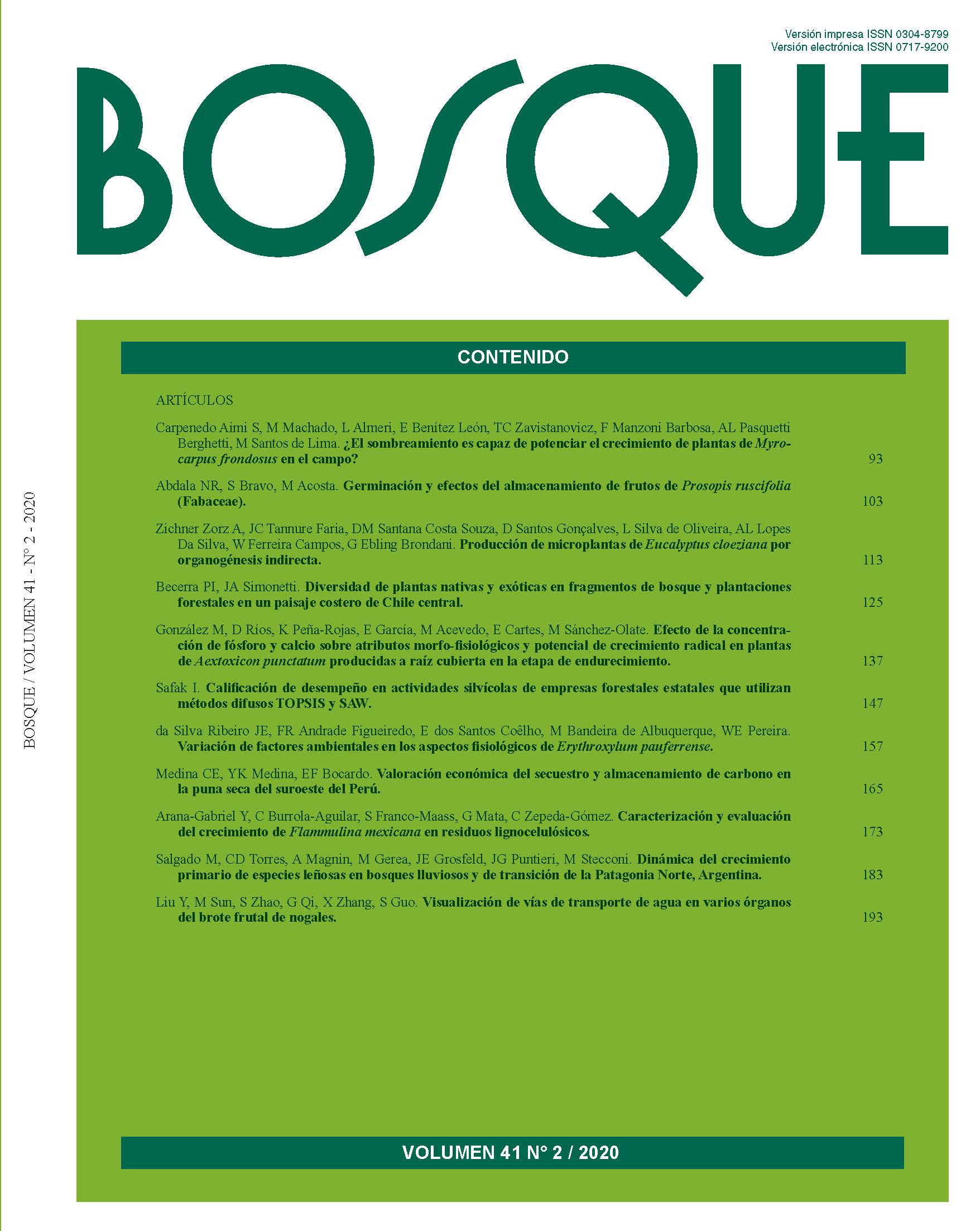Environmental factors variation in physiological aspects of Erythroxylum pauferrense
Conteúdo do artigo principal
Resumo
Ecophysiological studies are highly important to seek understanding of the plant-environment relationship. The objective of this work was to evaluate the influence of environmental factors on physiological aspects in young plants of Erythroxylum pauferrense throughout the day. A completely randomized design with 10 treatments and 4 replicates was used. Treatments were at different evaluation times throughout the day (8:00 h-17:00 h) with a 60-minute interval between them. The physiological variables evaluated were: photosynthesis rate, internal CO2 concentration, transpiration, stomatal conductance, vapor pressure deficit, instantaneous water use efficiency, intrinsic water use efficiency, instantaneous carboxylation efficiency and leaf temperature. Internal and external temperature, relative humidity of the internal and external air of the greenhouse and photosynthetically active radiation were measured as climatic variables. The climatic variables presented correlations with the physiological parameters, with a strong association between photosynthetically active radiation and internal and external temperature of the greenhouse with the rate of photosynthesis, vapor pressure deficit, leaf temperature, transpiration, intrinsic efficiency of the use of water, stomatal conductance and instant water use efficiency. The influence of climatic factors on the physiological aspects in plants of E. pauferrense can be observed. The most suitable period of the day for conducting the physiological evaluations in species is between 11:00 h and 13:00 h.

